General Information
Unit Length: | All students will either participate in a 9 week long unit of swimming OR two 4 1/2 week units. |
What: | Emphasis will be placed on *stroke technique and wellness days. (*Described in detail below.) |
When: | Swimming units start in November for some students and will continue throughout the remainder of the school year during their scheduled P.E. class. Students will be told when they are specifically starting at the beginning of the year. |
Excuses: | If a child is unable to swim because of an illness or medical reason a parent/guardian note is required. After two consecutive days of a parent/guardian note a doctor’s excuse is required. TheONLYexception to this rule is due to a girls menstrual cycle at which point a parent note will be accepted for longer than two days. |
Adaptations: | We understand students come to us with varying skill levels. Please understand we grade on individual psychomotor development, participation (including changing for class), and students cognitive ability to recognize swimming technique and rules. |
Requirements
As of the 2023-24 school year, students will be permitted to wear a one-piece swimsuit or tankini. A tankini is a two-piece swimsuit with a tank top and briefs/shorts. Here at SAES, the tankini must cover the student’s stomach / midriff.
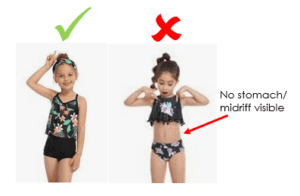
Swim shirts and shorts are also permitted and can be worn as the student’s swimming attire or over top of a swimsuit.

Swim trunks should fasten or tie to the waist. NO shorts with metal clasps or zippers.
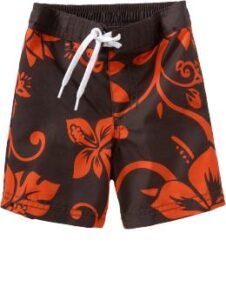
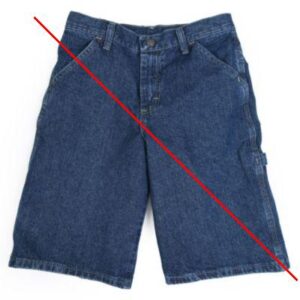
Any student with hair past their ears MUST wear a swim cap to help ensure proper water filtration. A blue latex cap can be purchased from the Activities Office for $3 or a student can bring one from home. If a student forgets to bring a cap, but has all other materials, a cap can be borrowed for 50 cents & must be returned at the end of the class period.
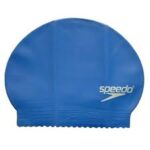
Goggles are not required but may be beneficial to help a student put their face in the water.
‘Dolfin Champ’ brand goggles can be purchased for $6-8 from the Activities Office or brought from home. NO goggles or masks that cover a child’s nose.
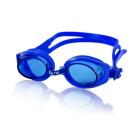
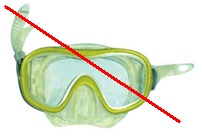
Stroke Technique
All stroke technique skills are based on the American Red Cross Learn to Swim Program.
LEVEL 3 – Stroke Development | LEVEL 4 – Stroke Improvement | LEVEL 5 – Stroke Refinement |
• Enter water by jumping from the side | • Headfirst entry from the side in compact and stride positions | • Shallow-angle dive from the side |
Aquaphobia - Fear
Aquaphobia or the fear of swimming is not uncommon and ranges from the fear of being submersed in water to getting wet at all. We approach this from an individual standpoint and try to help students move a step closer to overcoming that fear. Below are some helpful ideas to assist in the process of overcoming aquaphobia.
- Provide frequent and positive exposure to all kinds of water, to let the child take chances and experience success.
- Name the specific fear: Is it going under water, or maybe getting water in his/her eyes?
- Never minimize a child’s fear.
- Don’t cater to the fear, because this allows a child to hold onto it and use it to manipulate others. Acknowledge the child’s feelings by saying, ‘I know you’re feeling scared, but I’d still like you to try to sit on the side of the pool.’
- Never force a child to confront a fear of swimming by ‘throwing’ them into water. If a child appears stressed about your help or advice, take a break and try again with a patient demeanor.
- Spend time around water with no expectations of the child getting wet. Sit by the water’s edge and stick your feet in the pool. Often a child will be enticed into the water without coaxing.
- Read stories and watch movies that make playing in water fun and exciting.
- Do experiments with water. Let the child enjoy water and learn that some objects, including people, float.
- Remember, exposure to water doesn’t need to be through a formal program.
- A child needs lots of positive feedback to succeed. Being specific in your praise shows that you are paying close attention to his/her efforts. For example, instead of saying, ‘You are doing really well!’ say, ‘I really like the way you kick your feet.’
- See yourself as your child’s coach. Read your child’s signs of comfort or fear and adjust what you’re doing.
- Finally, be a good role model and enjoy the water yourself!



